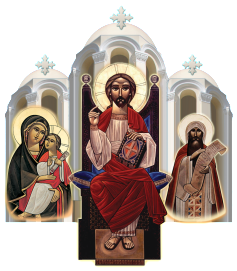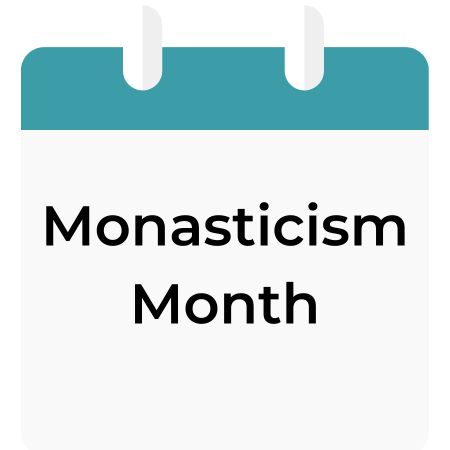St. Mary of Egypt was born in the city of Alexandria to God fearing parents. When she reached the age of 12, the Devil led her astray to a life of sin, who used her to catch the souls of many others in a life of harlotry. She continued in her sinful ways for 17 years, until she went along with a group of travelers going to Jerusalem to celebrate the Feast of the Cross. When they reached the church, St. Mary felt as if something was preventing her entrance through the doors and knew that it was due to her unclean way of life. She prayed and asked God for forgiveness through the intercession of the Holy Virgin. After her prayer, “A great terror and stupor came over me, and I trembled all over, but when I came to the door which until then had been closed to me, it was as if all the force that had previously prevented me from entering now allowed me to go in. So I was admitted without hindrance, and went into the holy of holies and I was found worthy to worship the mystery of the precious and life-giving Wood of the Cross. Thus, I understood the promises of God and realized how God receives those who repent” (Life of St. Mary of Egypt).
St. Mary of Egypt was led by a vision of the Theotokos to reside in the desert beyond the Jordan river, where she started her new life with Christ. She remained in the desert for 40 years, struggling against Satan in the fornication that she repented from. By the grace of God, she overcame all of these vices. She also practiced extreme asceticism, eating only herbs in the desert.
One year during the Great Fast, a monk by the name of St. Zosimas (Ζωσιμᾶς) came to the wilderness to increase in devotion and asceticism. He met St. Mary of Egypt in the desert, and she told him her story, asking St. Zosimas to return the next year so that she might partake of the Holy Eucharist. When he brought her the Holy Communion the next year, she partook and asked for St. Zosimas to do the same the following year. When St. Zosimas came to the desert again, he found St. Mary had departed. There was a lion guarding her body and writing on the ground saying, “Bury Mary, the poor woman, in the dust of which she was created” (Life of St. Mary of Egypt). The lion dug a grave for her body, and St. Zosimas buried and prayed over her.
Some of St. Mary’s sayings are recounted by St. Zosimas.
On repentance, she says:
“Abba, how shall I tell you of the thoughts that urged me on to fornication? A fire seemed to burn within me, awakening in me the desire for embraces. Then I would throw myself to the ground and water it with my tears. I seemed to see the Most Holy Virgin before me, and She seemed to threaten me for not keeping my vow. I lay face downward day and night upon the ground and would not get up until that blessed Light encircled me, dispelling the evil thoughts that troubled me” (Life of St. Mary of Egypt).
On asceticism, she recounts:
“After finishing my bread, I lived on herbs and the things one finds in the desert. The clothes I had when I crossed over the Jordan became torn and fell apart. I suffered both from the summer heat, when the blazing heat fell upon me, and from the winter cold, when I shivered from the frost. Many times, I fell down upon the earth, as though dead. I struggled with various afflictions and temptations. But from that time until the present day, the power of God has guarded my sinful soul and humble body. I was fed and clothed by the all-powerful word of God, since man does not live by bread alone, but by every word proceeding from the mouth of God (Dt 8:3, Mt.4:4, Luke 4:4), and those who have put off the old man (Col 3:9) have no refuge, hiding themselves in the clefts of the rocks (Job 24:8, Heb 11:38). When I remember from what evil and from what sins the Lord delivered me, I have imperishable food for salvation” (Life of St. Mary of Egypt).
St. Mary of Egypt departed at the age of 76 on the 6th of Baramouda, and we also celebrate her story of great repentance on the fifth Sunday of the Great Lenten Fast. Her amazing story of repentance and perseverance is something that we all should strive to achieve in our own journeys with Christ. May her blessings and prayers be with us all.
Sources & Further Reading:
Coptic Synaxarium – St. Mary of Egypt (Baramouda 6)
Life of St. Mary of Egypt by St. Sophronius of Jerusalem – All quotes from St. Mary of Egypt taken from this hagiographical account

